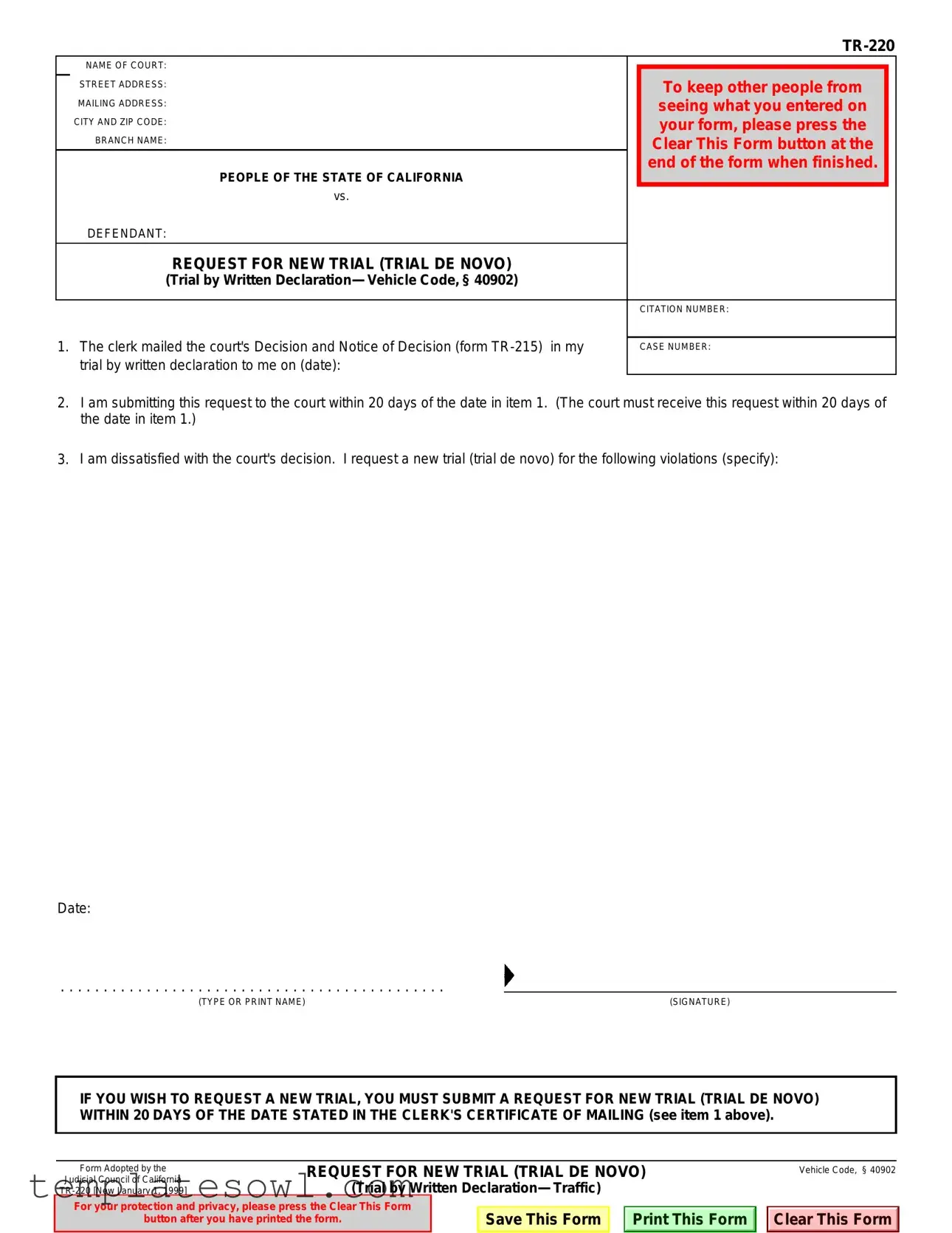What is the TR-220 form?
The TR-220 form is a legal document used in California courts to request a new trial, also known as a trial de novo, after a trial by written declaration. This form specifically pertains to cases regarding traffic violations under the Vehicle Code, § 40902.
What information do I need to fill out on the TR-220 form?
You will need to provide several details, including the name of the court, the citation number, your case number, and the date you received the court’s decision. Additionally, you'll need to specify the violations for which you are requesting a new trial. Make sure all information is accurate and complete.
How long do I have to submit the TR-220 form?
You must submit the TR-220 form within 20 days from the date stated on the clerk's certificate of mailing, which is mentioned in item 1 of the form. It is essential to adhere to this timeline to ensure your request is considered.
What happens after I submit the TR-220 form?
Once you submit the form, the court will review your request for a new trial. They will set a new date for the trial, and you will be notified of the details. It's important to be prepared to present your case again at the new trial.
Can I request a new trial for any type of violation?
The TR-220 form specifically applies to traffic violation cases adjudicated via written declaration. Other types of cases or different circumstances may require different forms or procedures. Confirm the appropriateness of this form for your specific violation.
What should I do if I am dissatisfied with the court’s decision?
If you are unhappy with the court’s decision, you may complete and submit the TR-220 form to officially express your discontent and request a new trial. Clearly state the reasons for your dissatisfaction in the appropriate section of the form.
Where do I submit the TR-220 form?
The completed TR-220 form should be submitted to the clerk of the court indicated at the top of the form. Ensure you submit it at the correct location to avoid any delays in processing your request.
Can I represent myself in the new trial?
Yes, you can represent yourself in the trial de novo. However, it is advisable to prepare adequately and consider seeking legal advice or assistance if you are unsure about how to present your case effectively.
Is there a fee to submit the TR-220 form?
There may be fees associated with submitting the TR-220 form, similar to other court filings. It’s best to check with your court’s clerk or website for specific fee information and payment methods.
What is the importance of pressing the "Clear This Form" button?
This instruction is included for your protection and privacy. Pressing the "Clear This Form" button after printing helps prevent any unintended disclosure of sensitive personal information. Always remember to safeguard your information.

